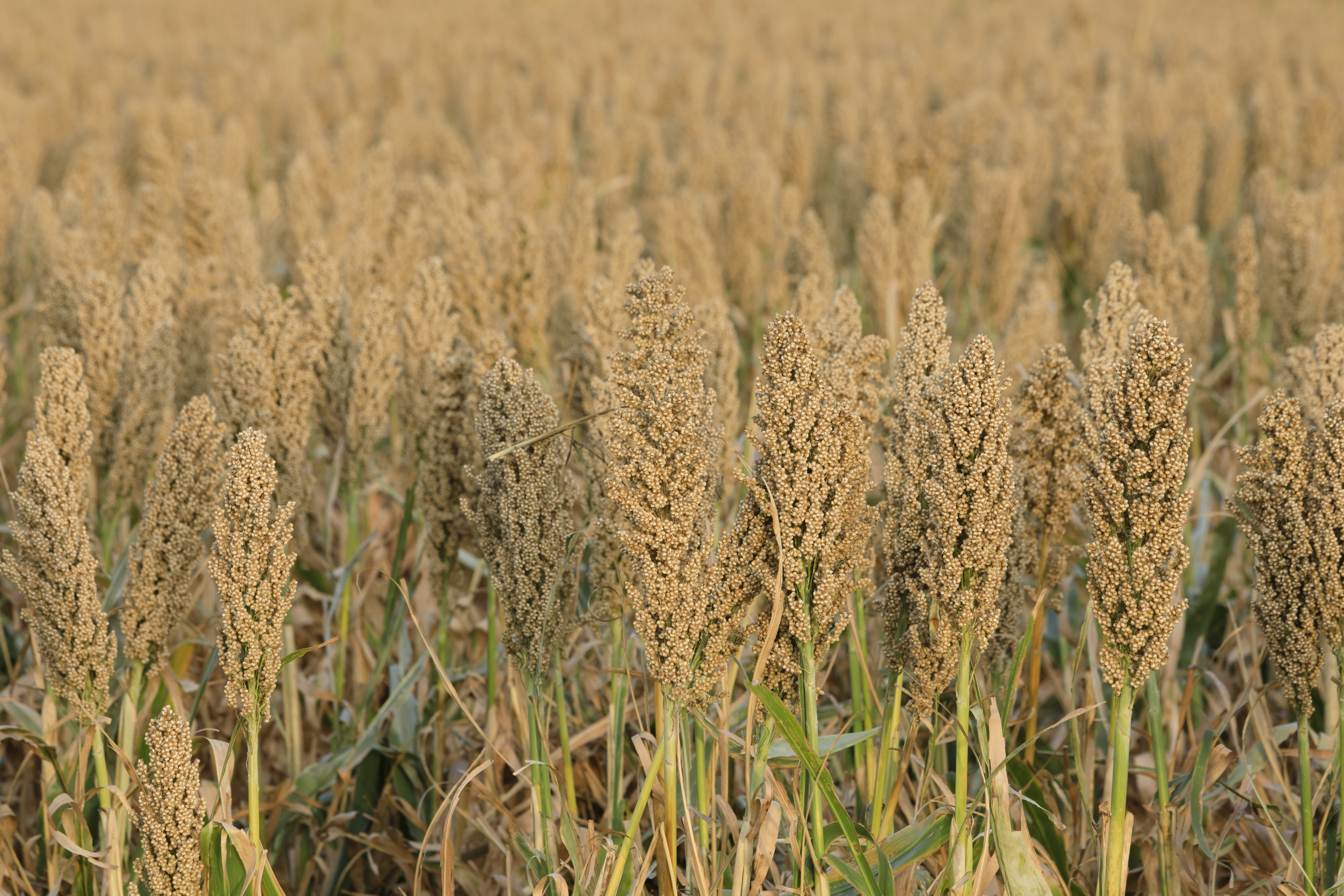Share This
June is here, and we’re focusing on June’s Grain of the Month: Sorghum! Whether you’re looking to boost your nutrition, try a new gluten-free option, or support sustainable farming, sorghum checks all the boxes. Sorghum is experiencing a deserved resurgence in popularity, driven by a mixture of health-conscious consumer trends, culinary innovation, and environmental sustainability.
Sorghum is a versatile grain that’s been cultivated for thousands of years. It was first domesticated in Africa, where it became a staple crop because of its resilience to drought and arid soil. From Africa, sorghum spread to Asia, the Middle East, and eventually to the Americas. In the U.S., sorghum was introduced in the 19th century, starting in the South as a feed crop, and was later used as a sweetener syrup. During the Dust Bowl, sorghum gained popularity as a drought-tolerant crop that could grow through the disaster. Today, it is grown across the globe, with the U.S. being one of the most prominent producers. Sorghum farming continues to thrive because of the grain’s adaptability to a variety of climates, its minimal water requirements, and growing demand for it in food and biofuel. U.S. farmers are embracing sorghum for its sustainability and economic benefits, cementing its place as a critical crop in both global food security and regenerative agriculture. Our friends at the United Sorghum Checkoff Program note that 75% of U.S. sorghum is grown with no-till or reduced tillage practices, promoting healthy soil and biodiversity!
Today, sorghum is the fifth-most important cereal crop in the world. The grains are small, round, and come in various colors – red, orange, bronze, tan, white, and black – each offering unique flavors and nutrients. Once primarily used for livestock feed and biofuel, sorghum is now featured in over 1,600 grocery items, up from 800 in 2017, showing its growing popularity on grocery shelves.
This historic grain is naturally gluten-free, non-GMO and rich in nutrients, making it an ideal choice for those seeking plant-based proteins and high-fiber options. Sorghum is packed with essential nutrients; a half-cup serving of cooked whole grain sorghum provides nearly double the iron of a 3-ounce sirloin steak and more than 7 cups of raw spinach worth of Vitamin B6. Plus, it’s a natural source of antioxidants, which may help lower the risk of chronic diseases like cancer, diabetes, and heart disease. Its versatility makes it a fantastic pantry staple, easy to include in grain bowls, salads, baked goods, and snacks. It’s easy to find whole grain sorghum products by looking for the Whole Grain Stamp!
The team at the United Sorghum Checkoff Program gave us some tips and insight into the rising star of sorghum:
1. How do you recommend using sorghum in a whole day of eating?
2. How do you think manufacturers and consumers should take advantage of sorghum’s growing availability?
The global sorghum market is projected to reach $31.77 billion by 2030, showing a strong and sustained demand for sorghum products. As consumers increasingly prioritize health and sustainability, sorghum’s star continues to rise, making it a grain worth including in modern diets. Whether you’re a seasoned cook or a newcomer to whole grains, sorghum offers a delicious and healthful addition to your meals. Our website has plenty of recipes, like our Popped Sorghum or Miso Kale Power Bowl with Sorghum to get started. Why not give it a try and enjoy the benefits of this ancient grain with a modern twist? (Vik)
To have our Oldways Whole Grains Council blog posts (and more whole grain bonus content!) delivered to your inbox, sign up for our monthly email newsletter, called Just Ask for Whole Grains.



Add a Comment